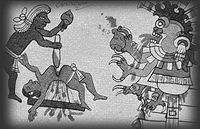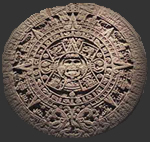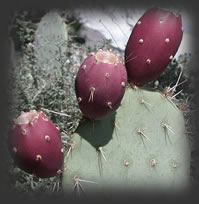
The burning times
It is impossible to know with any degree of certainty the number of people tortured and killed in an attempt to ‘save’ them from the sin of heresy, or those executed on suspicion of practicing ‘witchcraft’. However estimates based on research of contemporary records puts the total at around 20,000-500,000. [8]
Watch
out for false prophets...
By their fruit will
you recognize them
Matthew 7: 15-16
There are—and have been—many righteous causes. It is even possible to find ethical warriors in otherwise unholy wars. But the most pernicious betrayal of religion is when the only way to keep your own faith steadfast is to physically eliminate everyone that disagrees with your beliefs.
It is interesting that the word ‘heresy’ derives from a Greek word meaning ‘to take’, implying perhaps not only that a heretic is one who takes an opposing view but also that the adoption of a belief different from others is to take something from them. This is a rather generous way of looking at the motivation of those who have, throughout the ages, waged war against those they have judged as heretic.
One
of the oldest myths found in the Judeo-Christian Bible is the story
of
the expulsion of Adam and Eve from the garden of paradise for eating
forbidden fruit. Yet the fruit they had been denied was that of the
tree of “the knowledge of good and evil”, which is ironic,
considering that the ability to discriminate right
from wrong is precisely what Jesus is speaking of in the passage quoted
above.

Heart sacrifice to Huitzilopochtli

The Aztec
calendar stone, which unites solar, lunar and sacred cycles of time.
The central image is the glyph for the fifth
sun, Naui Olin [10].

The food it was believed the gods most desired—human
hearts—was known as quauhnochtli,
“eagle cactus fruit”.
Like
fine burnished tourquoise, you give your heart.
It comes to the sun. You will yet germinate—
will once again blossom on earth.
Nahuatl song in praise of one who died in battle
In Aztec belief, the heart—the vessel of a person’s soul [9]—was the most precious thing that could be given to the gods. This devotion—or sacrifice of self—is seen in many beliefs as a way of connecting to a greater sense of purpose. And even with the Aztecs this was not always meant to be a literal surrender; one of their highest ideals was the development of an authentic “face and heart” (in ixtli in yollotl)—that is, to become an individual and express the qualities that make one unique.
Aztec concepts of an afterlife varied, as did beliefs concerning the fates of those who died. Those chosen by the rain god Tlaloc—via a death by drowning or a similarly symbolic demise—were granted eternal life in a verdant earthly paradise, whereas women who died in childbirth and warriors who died in battle were believed to share an honoured afterlife in the house of the sun with the god Huitzilopochtli. Unfortunately the latter idea would be combined with another Nahuatl concept—the cosmology of five ages or ‘suns’ [10]—and developed into a justification for large scale human sacrifice. For it was said that without a constant supply of blood—chalchíhuatl, ‘precious liquid’—the sun would falter and all of existence would come to an end.
The Aztecs did not invent the practice of sacrificing human beings in the name of religion, but they institutionalised it as an instrument of political control. Ritual battles called flowery wars were arranged with neighbouring nations for the sole purpose of capturing potential sacrificial victims. There are no records detailing exactly how many people were killed in this manner [11], and many historians and anthropologists have suggested that these deaths were ‘logical’ within the parameters of Aztec belief. However it takes only a minor act of human empathy to believe that most of the victims of death by the obsidian knife would have felt less ‘honoured’ and more terrified as they were dragged up the temple steps.